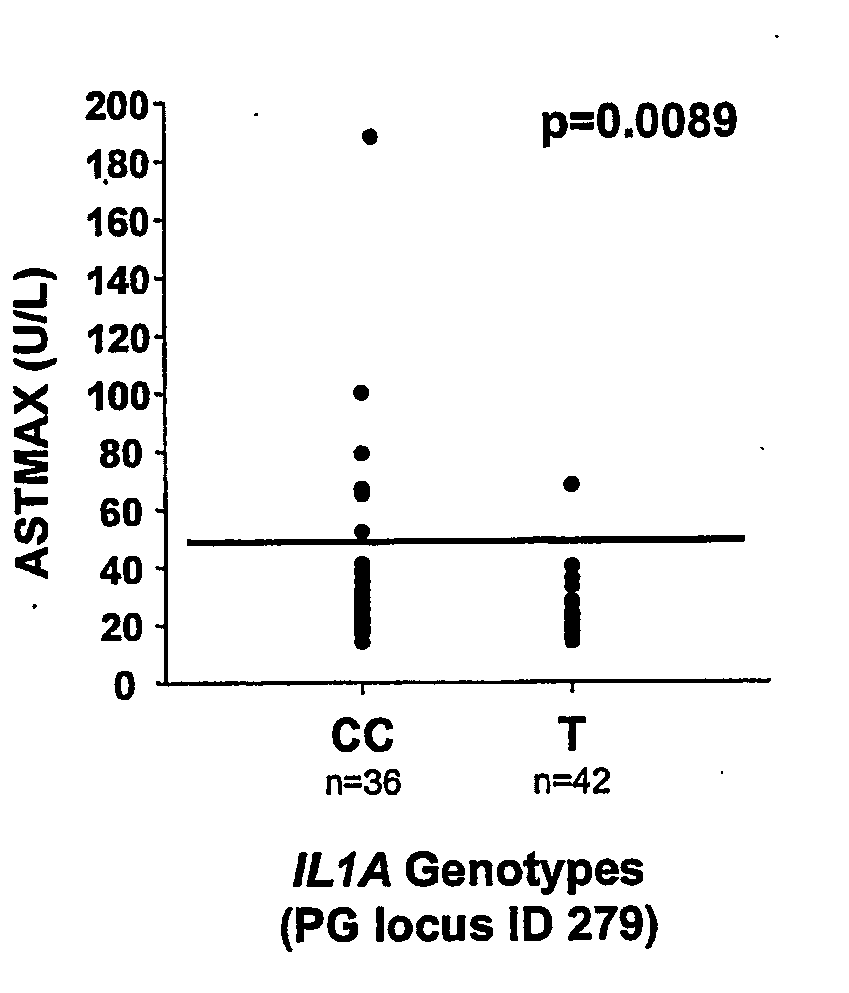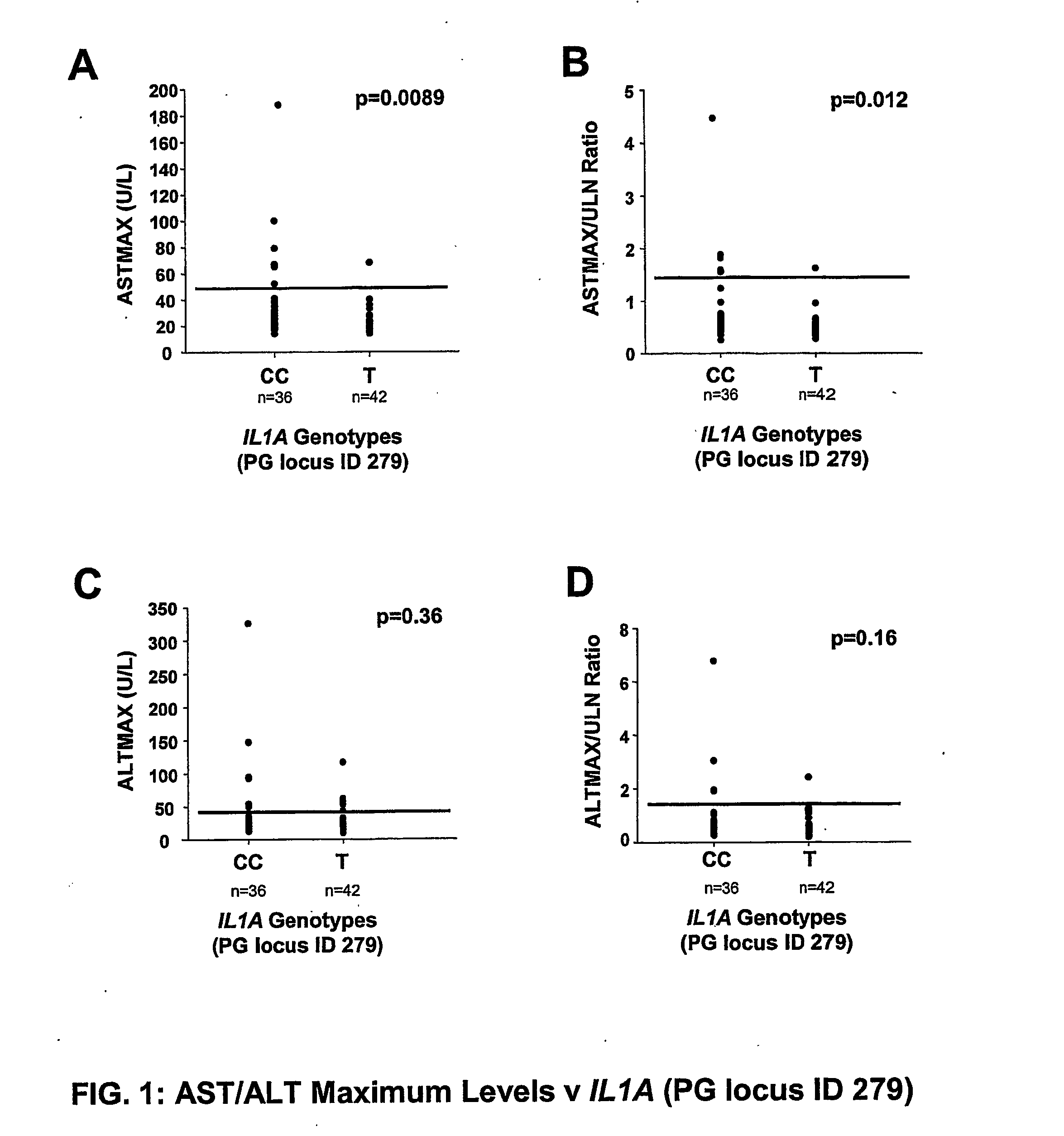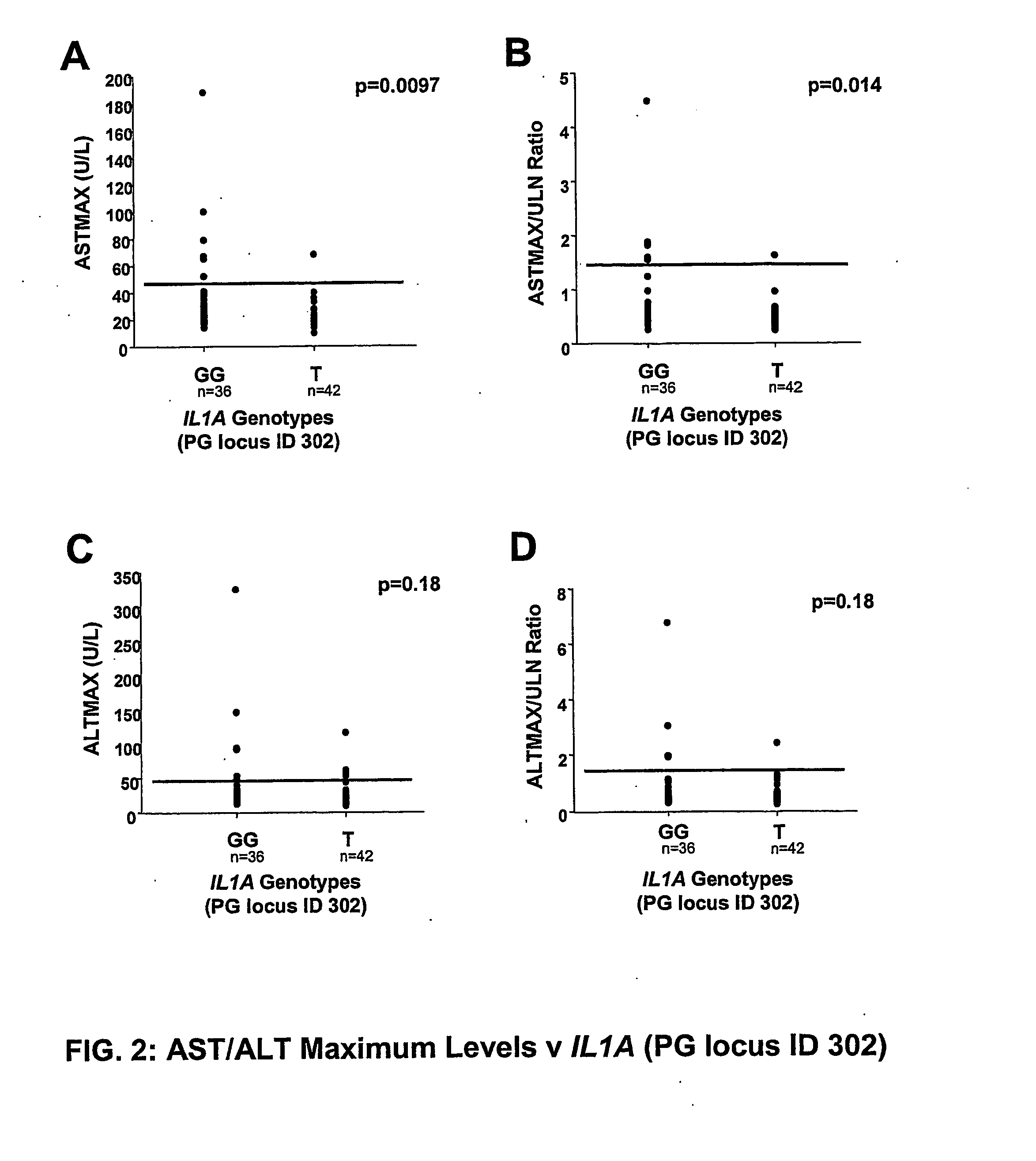Use Of Genetic Polymorphisms To Predict Drug-Induced Hepatotoxicity
a technology of hepatotoxicity and genetic polymorphisms, which is applied in the direction of biocide, drug composition, metabolic disorder, etc., can solve the problems of known side effects and liver toxicity, and achieve the effects of reducing the risk of hepatotoxicity
- Summary
- Abstract
- Description
- Claims
- Application Information
AI Technical Summary
Benefits of technology
Problems solved by technology
Method used
Image
Examples
example
Clinical Pharmacogenetic Analysis of Hepatotoxicity in the Clinical Trial
[0123] Demographics of clinical pharmacogenetic analysis participants. Of the 139 subjects enrolled in the clinical trial, 83 consented to participation in the clinical pharmacogenetic portion of the clinical trial. This represents about 60% of the total population that participated in the clinical trial. The clinical pharmacogenetic analysis population was representative of the clinical trial group in terms of age, race and gender. Furthermore, the consent rate was comparable for each arm of the trial (placebo, 50, 100 and 150 mg / day), such that the clinical pharmacogenetic analysis was not biased toward one dosage group. No statistically significant differences were observed between the demographics of the clinical pharmacogenetic population compared to the overall trial population.
TABLE 1Distribution of clinical pharmacogenetic samplescompared to the overall clinical trial samplesCPG samplesTrial samples...
PUM
 Login to View More
Login to View More Abstract
Description
Claims
Application Information
 Login to View More
Login to View More - R&D
- Intellectual Property
- Life Sciences
- Materials
- Tech Scout
- Unparalleled Data Quality
- Higher Quality Content
- 60% Fewer Hallucinations
Browse by: Latest US Patents, China's latest patents, Technical Efficacy Thesaurus, Application Domain, Technology Topic, Popular Technical Reports.
© 2025 PatSnap. All rights reserved.Legal|Privacy policy|Modern Slavery Act Transparency Statement|Sitemap|About US| Contact US: help@patsnap.com



